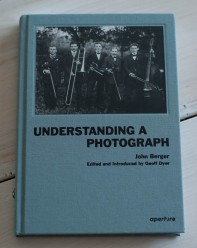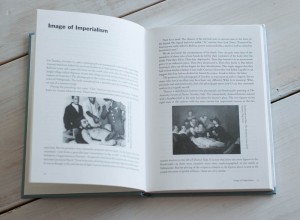Understanding a Photograph is a collection of essays by John Berger which is edited and introduced by Geoff Dyer. The essays are chronologically arranged. There are accompanying photos to some of the essays, but many do not feature the photograph under discussion, leaving one to resort to the internet to search for the photograph, or at least get an idea of the style under discussion. Being a book on photography I feel that it would definitely have been beneficial to include at least one photograph per essay as this would have helped understand the prose. This is another one of those books that would benefit from multiple readings.
The first essay is Berger’s ‘Image of Imperialism’ in which he analyses the photograph of the body of Che Guevara being looked upon by the Bolivian army offers and reporters. He points out the similarities between that photograph and Rembrandt’s painting of The Anatomy Lesson of Doctor Nicolaes Tulp and also compares it to Andrea Mantegna’s Lamentation over the Dead Christ. Berger (2013, p 18) states:
The photograph shows an instant: that instant at which Guevara’s body, artificially preserved, has become a mere object of demonstration. In this lies its initial horror. But what is it intended to demonstrate? Such horror? No. It is to demonstrate, at the instant of horror, the identity of Guevara and, allegedly, the absurdity of revolution. Yet by virtue of this very purpose, the instant is transcended. The life of Guevara and the idea or fact of revolution immediately invoke processes which preceded that instant and which continue now.
It is an image that calls the spectator to make a decision of either dismissal or to figure out the meaning for oneself.
In the essay Understanding a Photograph he goes on to say photography cannot be regarded as a fine art, rather it is someone’s choice being expressed at a certain moment in time. What distinguishes a photograph from a snapshot, he says ‘is the degree to which the photograph explains the message, the degree to which the photograph makes the photographer’s decision transparent and comprehensible.’ (Berger, 2013, p. 25). The true content of a photograph has to do with time, the moment the photographer chooses to make the photograph.
Other essays include:
- Political Uses of Photo-Montage – an essay about John Heartfield who invented the technique of photo-montage.
- Photographs of Agony – an essay about Don McCullin’s tours in Vietnam.
- The Suit and the Photograph – an essay about August Sander and his photograph: Peasants going to a dance, Westerwald, 1914.
- An essay on Paul Strand.
- Uses of Photography (for Susan Sontag) – an essay in response to Sontag’s book On Photography. I will definitely reread this essay after I have read Sontag.
- Appearances in which he deals with The Ambiguity of the Photograph, A Popular Use of Photography, The Enigma of Appearances.
- Stories – about the photographic narrative.
- Christ of the Peasants – about Markéta Luckačová and her Pilgrims collection.
- W. Eugene Smith – notes to help Kirk Morris make a documentary film, all about the character of Smith.
- Walking Back Home – Chris Killip: In Flagrante
- Means to Live – Nick Waplington: Living Room
- A Man Begging in the Metro – Henri Cartier-Bresson -observations of a friend.
- André Kertész: On Reading
- Martine Franck – correspondence between Berger and Franck
- Jean Mohr: A Sketch for a Portrait – an essay about his close friend
- A Tragedy the Size of the Planet – Conversation with Sebastião Salgado
- Recognition: Myra Peralta: Nearly Invisible
- Tribute to Henri Cartier-Bresson
- Between Here and Then – Marc Trivier
- Marc Trivier: My Beautiful
- Jitka Hanzlová: Forest
- Ahlam Shibli: Trackers
Berger’s work is not the type where you can sit and read it in one sitting. It is more like a rich repast with fine wine. His words require one to mull them over, to taste the flavor of his writing and to let the imagination run free. Savour his essays gently.
Reference List
Berger, John. (2013). Understanding a Photograph. 1st ed. New York: Aperture Foundation


